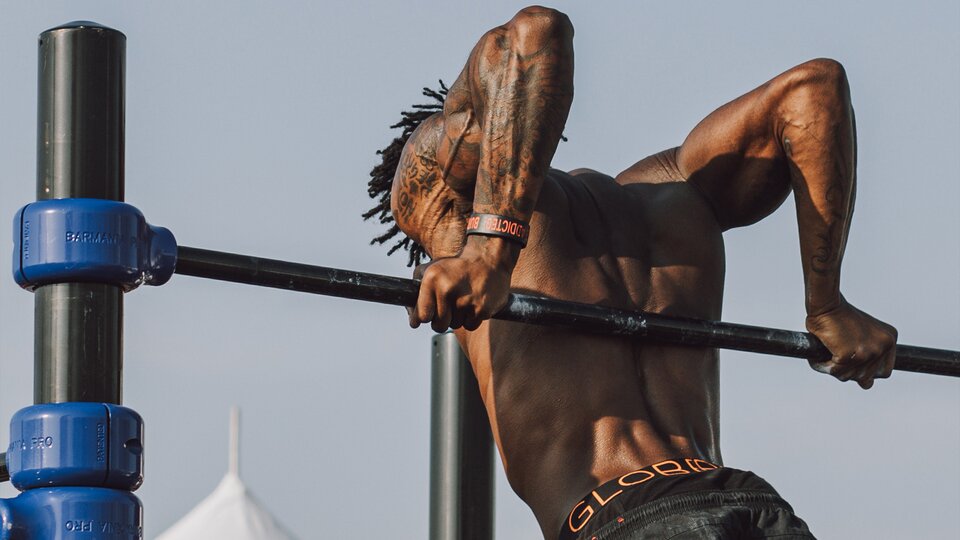Products You May Like
Why Calisthenics?
Calisthenics is a simplified approach to hypertrophy that can be done anywhere. This style emphasizes full range of motion (ROM) and mobility. Some may argue that calisthenics can hurt their gains, but science says otherwise. The body can only identify stress through time under tension (TUT) during hypertrophy. It does not know the difference between a heavy weight or natural gravity. Resistance is resistance.
The most important habits in calisthenics are core engagement, stable shoulders, and mobile hips. Workouts keying in on these three disciplines will greatly benefit your strength goals.
Before jumping into the first exercise, the warm-up should be addressed. The wrists and ankles should be stretched out beforehand to prevent injury. Calisthenics applies the most weight onto the hands and feet in the bodyweight-bout with gravity. Next comes the driving point of any movement: the shoulders and hips. These are the staples of the upper and lower body, connecting every muscle together. Once the entire body is warmed up, it is safe to jump into practicing the movements.
Engaging the Core
In calisthenics, the core should be the strongest muscle. The core is the basis in every movement, hence the name because it connects the upper and lower body. For beginners, the plank (or planche) is the best place to form a strong full-body foundation.
First, set up the body in a table-top position, applying force to the inner hands and forefingers while rotating the elbows in. Next, ensure that the spine is sitting in a neutral position, not bending too far in either direction. If the spine is curving towards the sky, your abs won’t be getting the work they need. If it’s curving towards the floor, it will cause unnecessary spinal pressure or pain. After you’re feeling stable, step the feet back until they are straight.
Another valuable core exercise is the hyperextension. This posterior chain exercise hits the muscles that keep us standing strong. The anterior muscles (chest, abs, quads) are the show muscles, whereas the posterior muscles (back, glutes, hamstrings) are the go muscles. It’s good practice to dedicate at least half of a workout towards the posterior chain. The hyperextension will hit the lower back, glutes, and hamstrings. The posterior deltoids can also be engaged if the arms are brought towards the lower back.
The challenge of this backbend is to not rock the body. The point is to control everything in order to resist rocking. This can be done with the feet anchored or with the feet floating a few inches above the ground. The hyperextension will form a foundation for the rest of your posterior chain work.
Working Towards the Handstand
The shoulders are the driving point of the upper body. They are the three-dimensional knot tying together the torso’s posterior and anterior muscles. If they are not strong, executing essential movements will become an obstacle. In calisthenics, one of the top goals is to safely perform a handstand. The pushup is a great bridge for beginners between the plank and the handstand.
This will develop the necessary anterior muscles for torso strength, mainly the pectoral major, triceps brachii, and deltoids.The most important cues when performing a pushup are:
-
Keeping the elbows no more than 45 degrees away for the ribcage. Wide pushups can cause damage on the rotator cuff.
-
Lowering the elbows to a 90 degree angle and keeping the chest off of the ground.
-
Engaging the pecs, triceps, and deltoids when pushing up.
The modifications for pushups make it a movement for every level. A beginner can do them from their knees, while an advanced athlete can elevate their feet or wear a weighted vest. The higher the feet, the more shoulder activation applied. The higher the hands, the more the pecs are worked.
Working Towards the Front Lever
The inverted row is the first step towards a turtle shell for a back. This exercise develops strength in the upper back, posterior deltoid, and the latissimus dorsi. The lats are important because they connect the shoulders to the core and hips. It is imperative to keep them as strong as the shoulders.
Every calisthenics athlete values the inverted row for its variety of difficulties. Like the pushup, this workout can be done on various platforms and angles. Depending on the angle of the torso and the elbows, it can target any muscle in the back. The closer the elbows are to the ribcage, the more the lats will be worked. The more the elbows are flared out, the more the upper back and posterior deltoid are engaged. Important cues are:
-
Getting a good grip and keeping the heels on the floor.
-
Keeping the shoulders as far away from the ears as possible.
-
Squeezing the shoulder blades as close together as possible and pulling the elbows down and back.
Controlling the Lower Body
The hips are as important to the lower body as the shoulders to the upper body. A compound lower body workout that has as much flexibility as the pushup and the row is the step-up.
These are great for developing the hips alongside the outer quads and glutes.
This movement can be done on a sturdy box of any height or even on a staircase. The first step should involve the heel hitting the higher ground first. Imagine walking up a set of stairs If the upper body is leaning forward, the anterior muscles of the lower body will be worked more. If the torso is more upright, it will engage the posterior muscles. No matter what, it’s still important to engage the core and squeeze the glutes.
